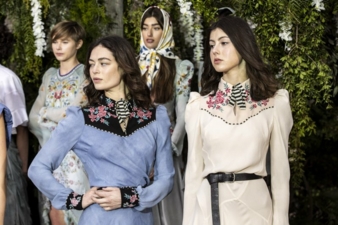04/05/2021 – Advert — auf Deutsch lesen
Why did Kornit develop its groundbreaking MAX technology?
The Fashion and Retail industries are constantly shifting and changing. Still, recent transformations – some caused by the pandemic and others born more naturally and gradually – encourage the tectonic plates of our business to move. These shifts lead to higher standards across the industry, and even more so in the high-volume production segment. Here are three notable changes that force brands, fulfillers, and everyone in between to step up their game.
Raise the bar: 3 Market Shifts That Require New High-Volume Production Standard:
- 1: Higher market demands
Consumers spend their hard-earned money on clothing items and demand the highest standards in return. Over the years, their demands grow and become more specific as time goes by. Here are some of the requirements that brands must answer in today’s competition over consumers’ approval:
- Quality: From the quality of the fabric to the color of the print, customers want their clothes to offer the best quality in every sense of the word. Brands must be consistently excellent.
- Durability: This is especially true for consumers who prefer to buy less and focus on a few key items (a growing trend in today’s market conditions in some regions). Clothes are expected to stand the test of time, brave weather conditions, and stay vibrant and presentable after multiple launderings. This is yet another proof of the overall garment quality.
- Sustainability: Today’s consumers expect transparency and responsibility from brands. They want to know that they invest their money in companies with positive values and impact.
- Service: Quick response and fast delivery are critical components of the purchasing experience. Companies must fulfill their promise within a short time frame, which requires reliable and robust production capabilities.
- Uniqueness: Consumers, much like businesses, want to stand out from the crowd and be unique. That’s why the clothes they wear must include new and innovative decorations.
To win this battle, brands need their business partners to be reliable, consistent, and innovative. Businesses have less room for error and need to broaden their offering while improving efficiency and profitability levels.
- 2: Online shopping becomes the default
Pandemic lockdowns forced billions of consumers to find alternatives for their routine habits. Those who didn’t give online shopping a go before the Covid-19 era learned to embrace the virtual arena. This accelerated and changed people’s behaviors and it is here to stay. Now, more than ever before, online shopping is the default option.
There are multiple meanings to this change, including shipping logistics, unexpected surges in demand that stretch high-volume production limits, and more. Brands and fulfillers learn that the world is completely unpredictable, and they have to rely on their production capabilities and solid business partners.
- 3. The supply chain shift
Speaking of business partners, the supply chain shift that started a few years ago has dramatically increased in the past year, changing the roles of many players in the fashion and retail game. Brands learned not to put all their eggs in one basket and started collaborating with multiple textile print fulfillers. Many companies moved their production closer to consumers in onshoring and nearshoring procedures.
This change demanded fulfillers play a more significant role and take on new responsibilities that include independent production, packaging, shipping, customer support, and more. To achieve all of these goals at scale is far from easy, and high-volume production became an even harder segment to master.
If the above details sound familiar and you feel overwhelmed by the challenge — we’ve got good news for you! Check out Kornit’s groundbreaking new MAX technology, the next generation solution for on-demand, sustainable fashion and apparel production.





